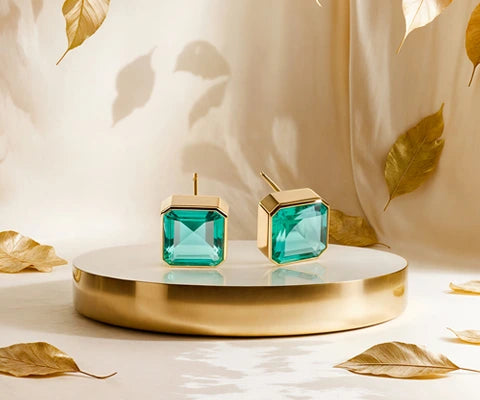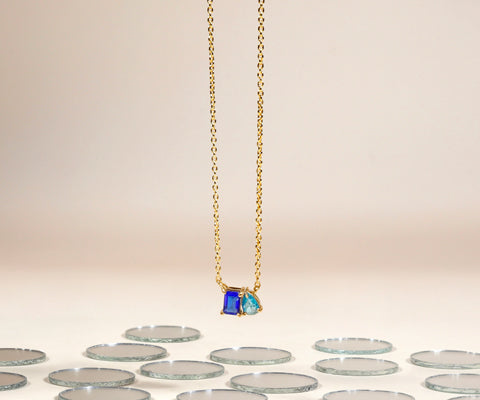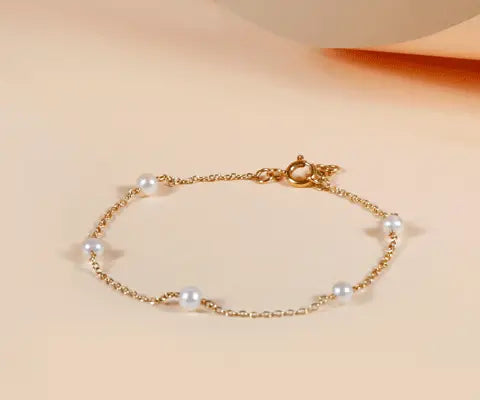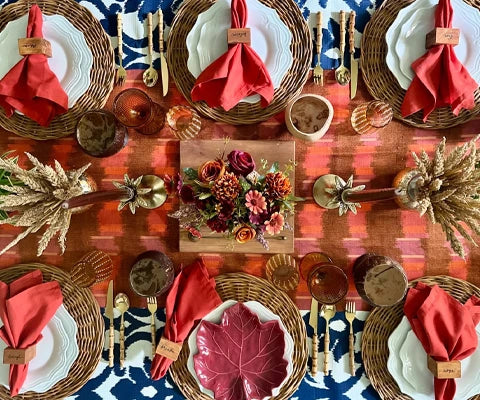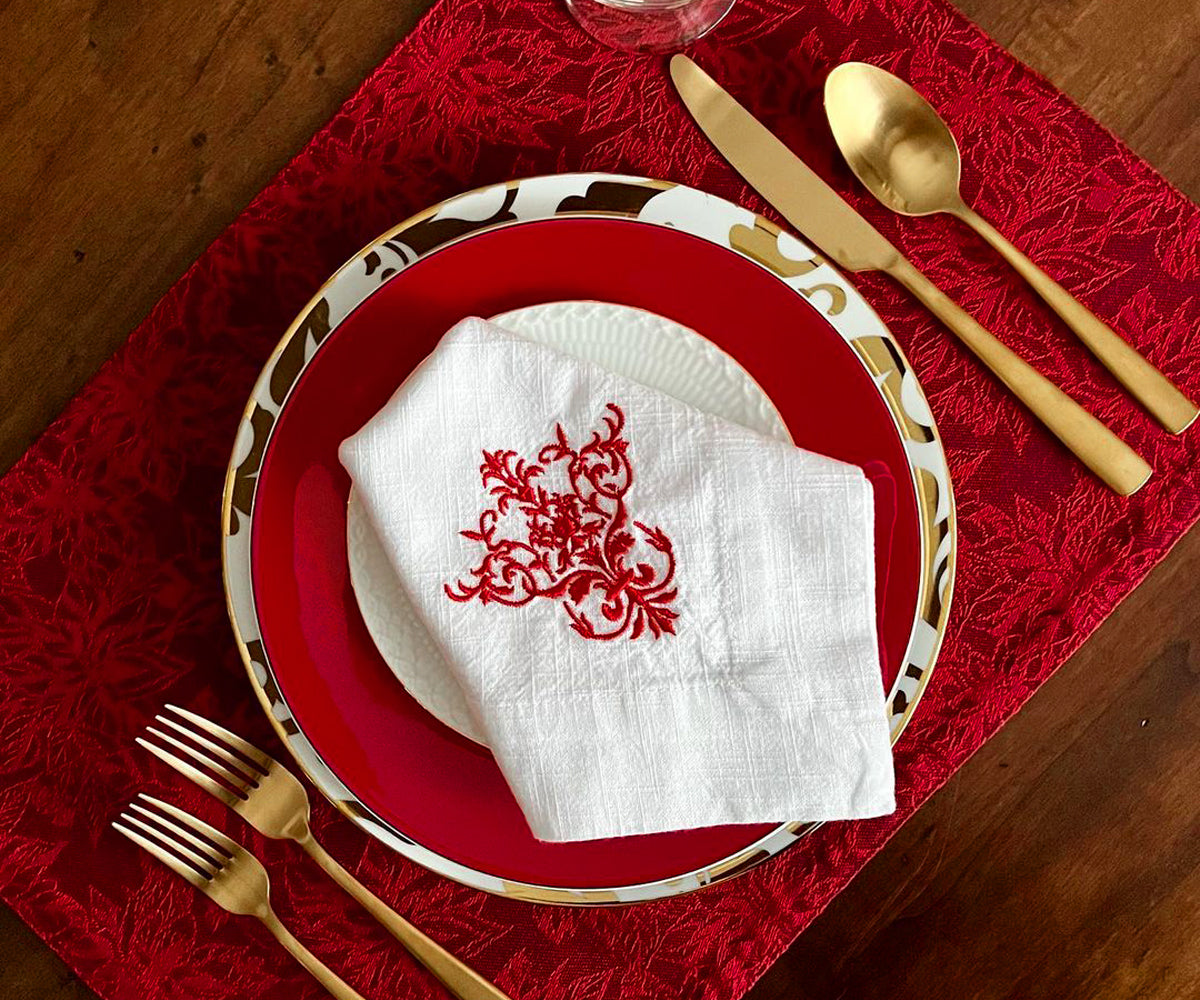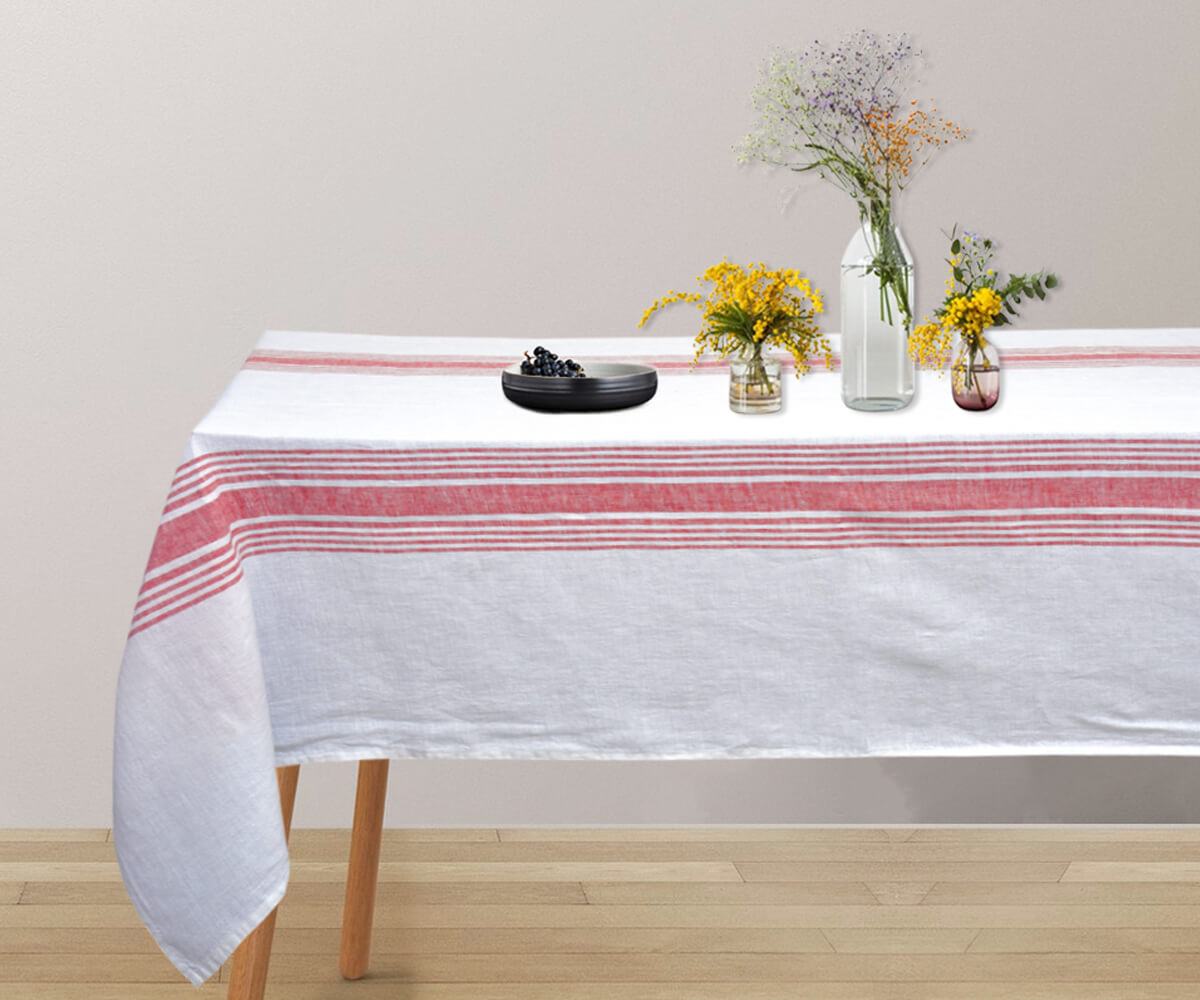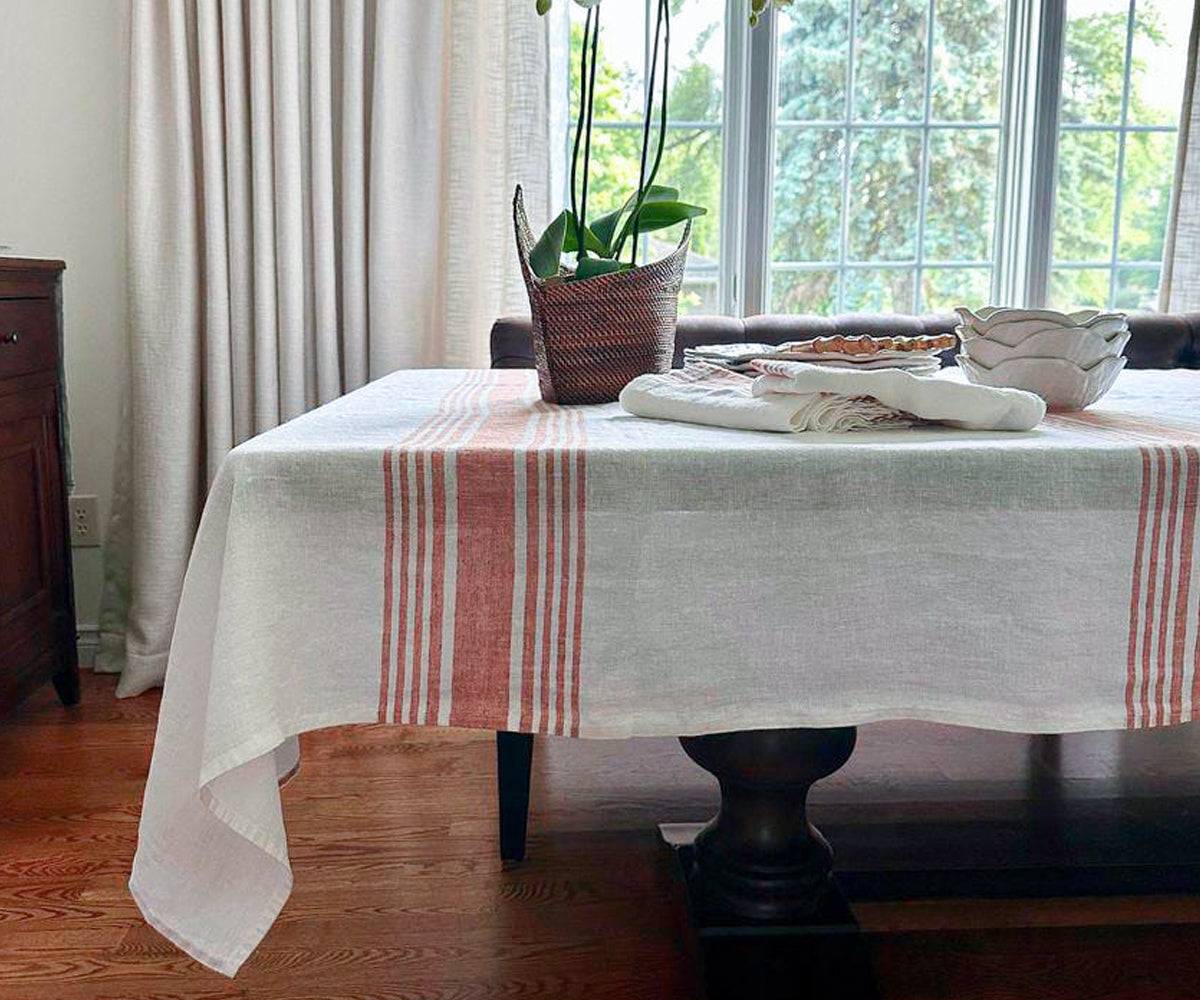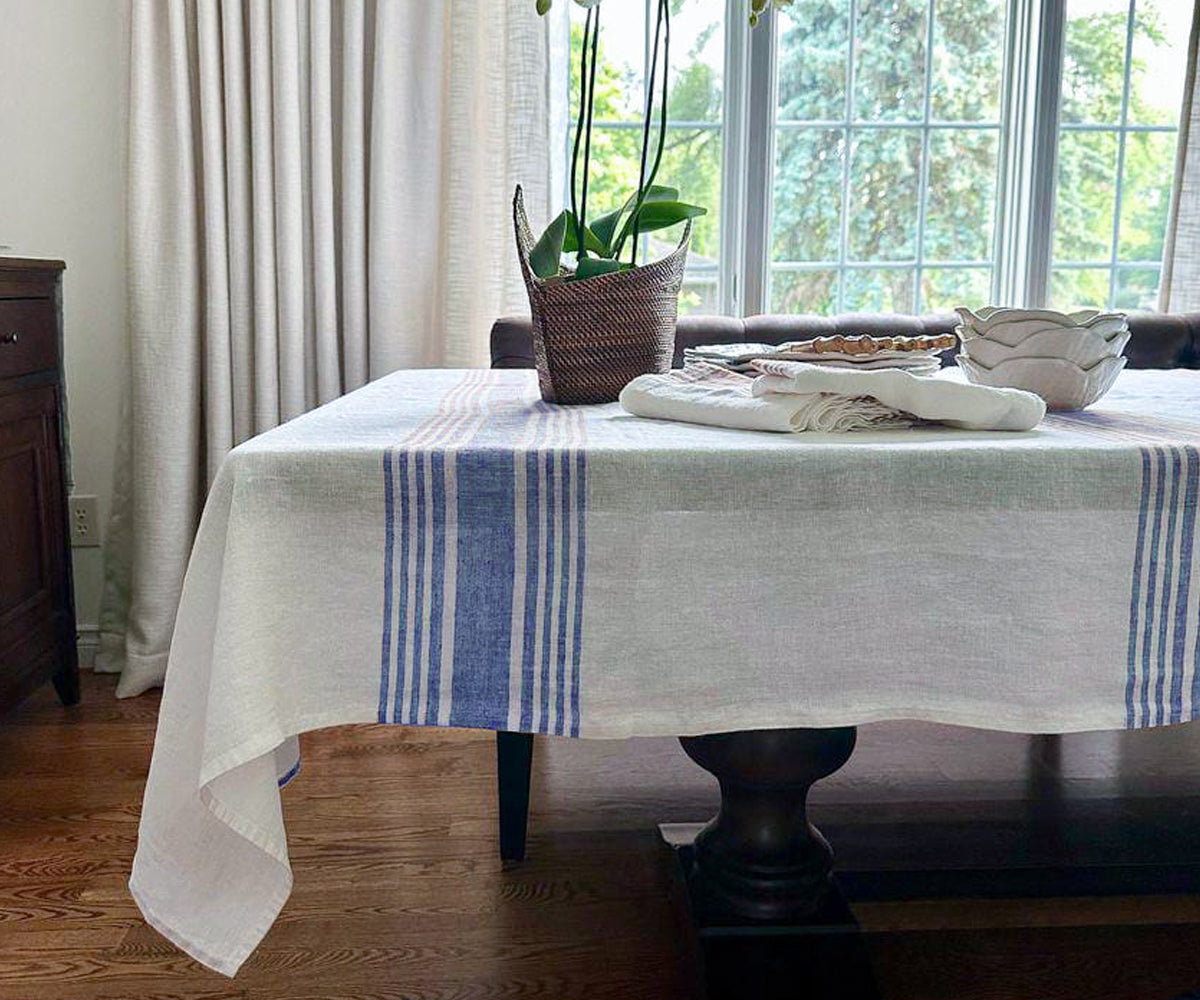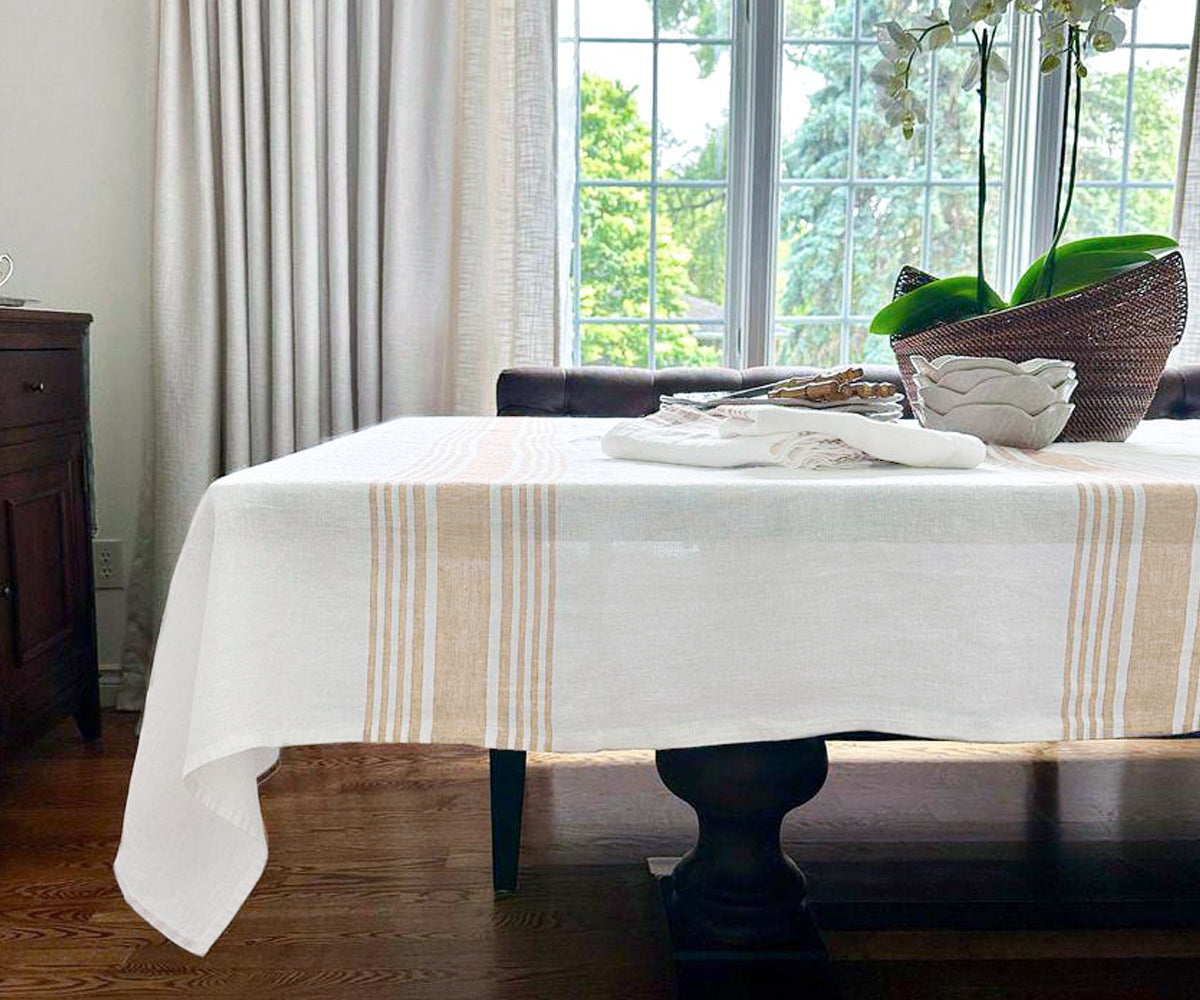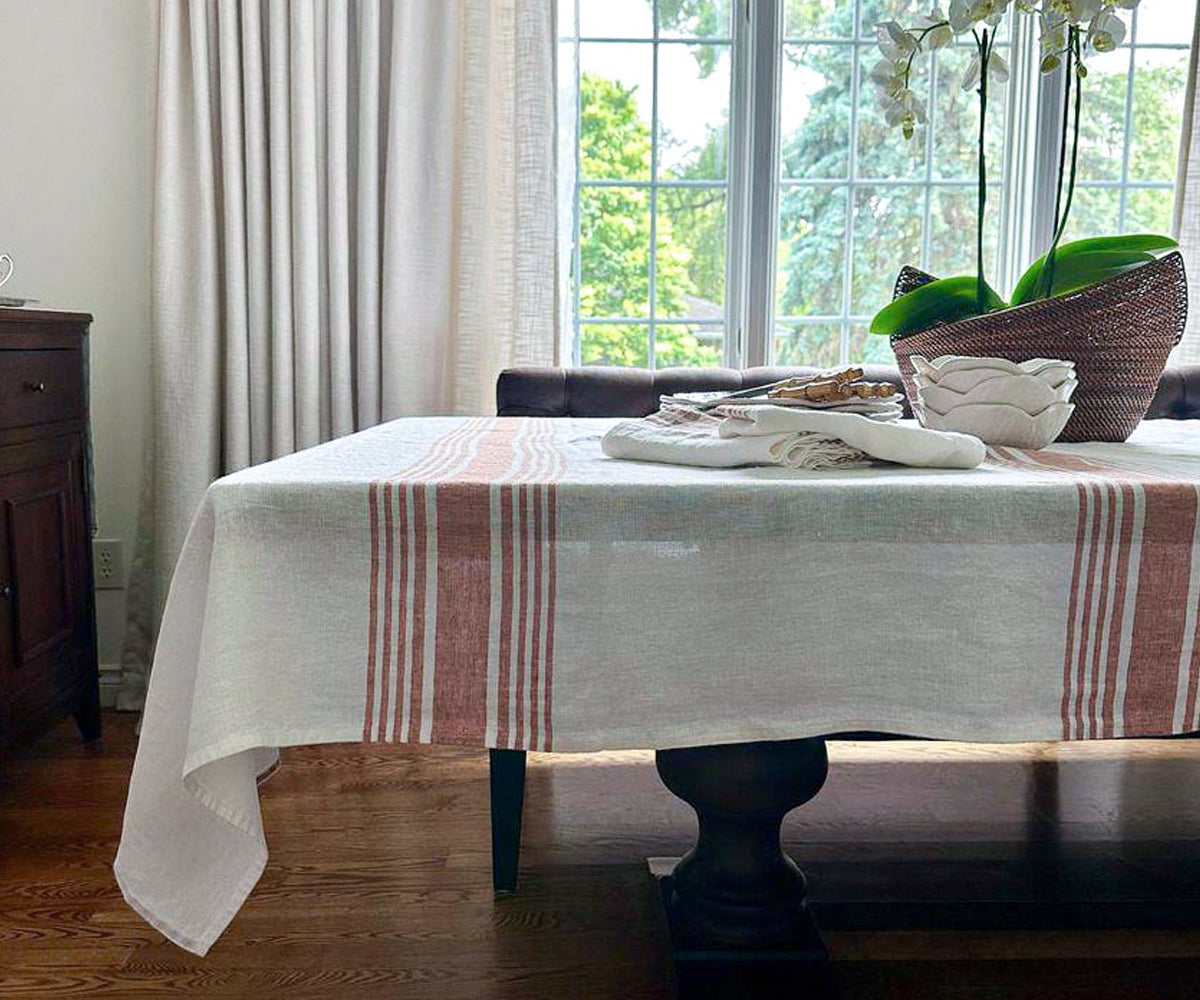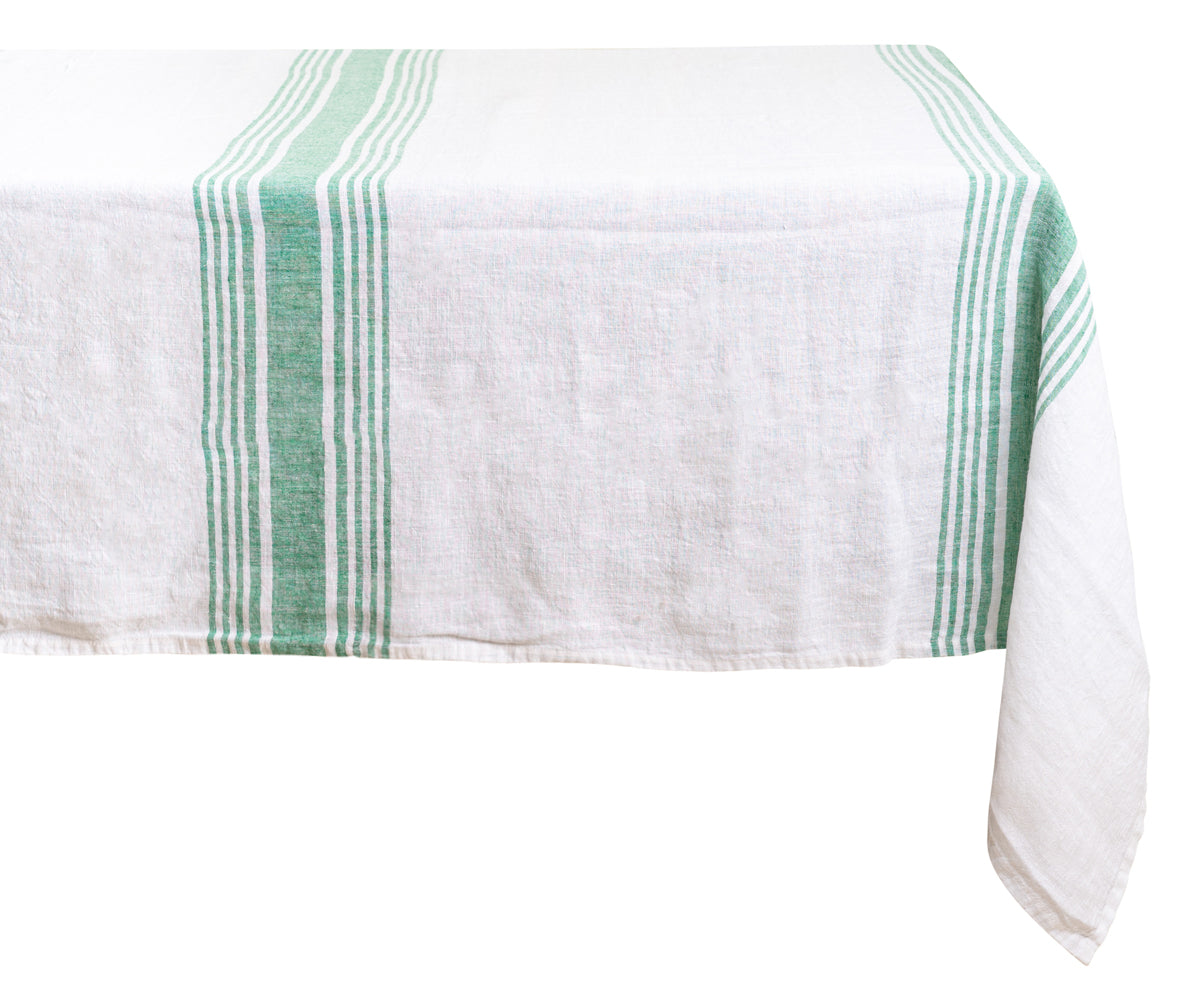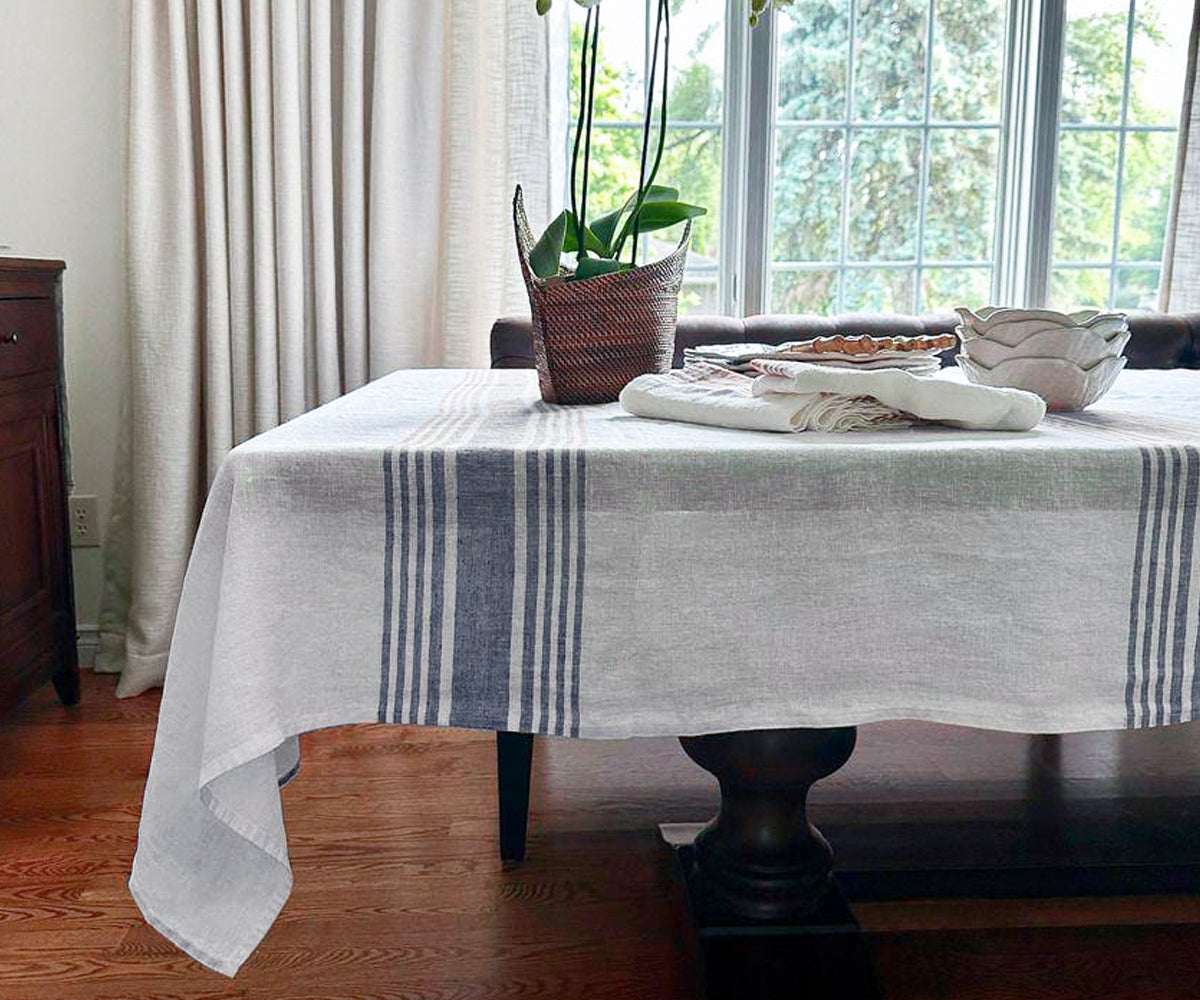1. What Makes Linen Tablecloths So Special?
Linen has been a prized fabric for centuries, and for good reason. Made from the fibers of the flax plant, linen tablecloths are known for their superior quality, natural texture, and durability. Here’s why linen outshines cotton:
- Durability: Linen is stronger than cotton, making it a long-lasting investment. Unlike cotton, which wears out with frequent washing, linen actually becomes softer over time, maintaining its charm for years.
- Natural Look: The textured finish of linen adds a sophisticated, earthy look to any table setting. It has a unique ability to look both casual and elegant at the same time.
- Eco-Friendly: Linen is a natural fiber that requires fewer resources to grow compared to cotton. It’s a great option for those looking to make environmentally-conscious choices.
- Temperature Regulation: Linen is known for its breathability, making it ideal for both hot and cold climates. Whether you're hosting a summer picnic or a Christmas feast, linen will keep your table cool and stylish.
Read More: What are some Halloween decorations that can add pops of color to my home decor?
2. Linen Tablecloths for Every Occasion
A linen tablecloth is not just for fancy dinners—it’s versatile enough to suit any occasion. From casual get-togethers to formal events, linen can be dressed up or down. Here are a few occasions where linen tablecloths shine:

- Everyday Dining: A square tablecloth made of linen can transform your everyday meals into a more pleasant experience. Its soft texture and timeless look elevate even the simplest of dinners.
- Holiday Celebrations: Hosting a holiday meal? A Christmas tablecloth made from linen will add a touch of luxury and festivity to your table. Its natural luster pairs well with holiday décor, creating an inviting and elegant atmosphere.
- Picnics: Take your outdoor dining to the next level with a picnic tablecloth in linen. It’s lightweight, easy to pack, and can withstand the elements, making it a practical and stylish choice for outdoor gatherings.
- Vintage Vibe: If you love a touch of nostalgia, a vintage tablecloth in linen can bring that old-world charm to your table setting. Pair it with antique silverware and rustic décor for a classic, timeless look.
3. The Benefits of Linen Over Cotton
While cotton has long been the go-to fabric for tablecloths, linen offers distinct advantages that make it a superior choice for many homeowners. Here’s why:
- Wrinkle-Resistant: Although linen is known for its relaxed, wrinkled appearance, it’s far less prone to deep creases than cotton. This means your tablecloth linen will look polished without much effort.
- Absorbency: Linen is highly absorbent and quick-drying, which makes it an excellent choice for spills during meals. Unlike cotton, which can remain damp for extended periods, linen tablecloths dry quickly, preventing stains from setting.
- Hypoallergenic: Linen is naturally hypoallergenic, which makes it a great choice for those with sensitive skin or allergies. Cotton, on the other hand, can sometimes cause irritation due to the chemicals used in its production.
Read Related: What Is the Best Way to Choose a Table for a Small Dining Area?
4. Tablecloths for Every Table Shape
When shopping for tablecloths, it’s important to consider the shape of your table to ensure a perfect fit. Here’s how linen tablecloths can complement various table shapes:
- Round Tables: A tablecloths round linen option provides the perfect drape and coverage for circular tables. Whether it’s for an intimate dinner or a larger gathering, round linen tablecloths create a seamless, flowing look that enhances the table’s shape.
- Square Tables: A square tablecloth in linen is ideal for smaller, square-shaped tables. It offers a tailored look that adds a modern and stylish touch to any dining area.
- Rectangular Tables: For rectangular tables, a linen tablecloth can easily be adjusted to fit the length, offering full coverage while maintaining an elegant drape.
5. Care and Maintenance of Linen Tablecloths
One of the reasons why people shy away from linen is the myth that it’s difficult to care for. However, linen tablecloths are surprisingly easy to maintain with a few simple steps:
- Machine Washable: Contrary to popular belief, most linen tablecloths are machine washable. Use a gentle cycle with mild detergent, and avoid bleach or harsh chemicals.
- Air Dry: To maintain the softness of the fabric, it's best to air dry your linen tablecloths. If you prefer to use a dryer, opt for a low heat setting to prevent shrinking.
- Ironing: Linen doesn’t require ironing if you prefer its natural, textured look. However, if you want a crisp, polished finish, iron your tablecloth linen while it’s still slightly damp for best results.
Also Read: Vintage-Inspired Halloween Table Decor - A Complete Guide
6. Linen Tablecloths: A Sustainable Choice
With growing awareness about sustainability, more people are turning to eco-friendly home products. Choosing a linen tablecloth is a great way to make your dining experience greener:
- Biodegradable: Linen is a natural fiber that breaks down easily, unlike synthetic materials which can take centuries to decompose.
- Less Water Usage: The production of linen requires significantly less water compared to cotton, making it an environmentally responsible choice.
- Longevity: Linen is more durable than cotton, meaning you’ll need to replace it less often, reducing waste in the long run.
7. Styling Tips for Linen Tablecloths
The beauty of linen lies in its versatility—it works with any style, from minimalist to rustic to glamorous. Here are some tips for styling your linen tablecloths:

- Layering: For a sophisticated look, layer a smaller square tablecloth over a larger rectangular one. Mix and match neutral shades of linen for a chic, understated effect.
- Seasonal Décor: A Christmas tablecloth made of linen pairs beautifully with festive centerpieces and candles. Use red and green accents to enhance the natural elegance of linen during the holidays.
- Accessorize with Napkins: Pair your linen tablecloth with matching linen napkins to create a cohesive look. For a pop of color, choose napkins in bold hues that contrast with your tablecloth.
8. Where to Buy Linen Tablecloths
Ready to make the switch to linen tablecloths? You can find a wide variety of options at the All Cotton and Linen online store. From kitchen towels to table linens, cloth napkins, and tablecloths, their collection features high-quality linens that are perfect for any home. Whether you’re looking for a picnic tablecloth or an elegant vintage tablecloth, they have a range of styles and sizes to suit your needs.
Linen tablecloths are more than just a decorative item—they’re a practical, durable, and eco-friendly choice that enhances every dining experience. Whether you're hosting a casual family meal or a formal holiday dinner, a linen tablecloth is a timeless investment that will serve you well for years to come. So why stick with cotton when linen offers so much more?
Head over to All Cotton and Linen to explore their beautiful collection of linen tablecloths, table linens, and more! Add a touch of elegance and sustainability to your home with high-quality linens that will never go out of style.


